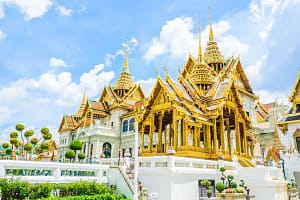Fukuoka’s Hidden Gems: 41 Attractions Off the Beaten Path
Fukuoka, a vibrant city nestled on the northern shore of Japan’s Kyushu Island, is often hailed as a gateway to Asia. Yet, it’s much more than just a transit point; it’s a city rich in culture, history, and modern attractions, offering a unique blend of urban sophistication and traditional charm. From the ancient tranquility of its temples and shrines to the bustling energy of its markets and shopping districts, Fukuoka invites visitors to embark on a journey of discovery. As we delve into the “Top 41 Tourist Attractions in Fukuoka”, each spot unveils a new facet of this dynamic city, promising unforgettable experiences for every traveler.
The city’s natural beauty is as diverse as its cultural offerings. With scenic parks, serene beaches, and inviting outdoor spaces, Fukuoka provides a refreshing escape into nature. Whether it’s enjoying a leisurely stroll in Ohori Park, relishing the coastal views at Uminonakamichi Seaside Park, or exploring the city’s surrounding mountains, Fukuoka offers a tranquil retreat from the urban hustle. These natural wonders stand in harmonious contrast to the city’s modern architecture and vibrant nightlife.
Fukuoka’s culinary scene is a paradise for food enthusiasts. The city is renowned for its Hakata ramen, a rich and flavorful noodle soup that has gained international acclaim. Street food stalls in Nakasu and traditional markets like Yanagibashi Rengo Market showcase the city’s gastronomic diversity. Beyond its delectable cuisine, Fukuoka is a treasure trove of hidden gems – quirky art installations, historical landmarks, and unique local experiences that await discovery.
1. Dazaifu Tenmangu Shrine

A shrine steeped in legend and beauty, Dazaifu Tenmangu is dedicated to Sugawara Michizane, a scholar and deity of learning. Majestic and serene, the shrine is surrounded by thousands of plum trees, a museum, and a treasure hall. It’s not just a spiritual center but also a place of historical and natural splendor, attracting students and tourists alike.
- Trip Plan: Spend about 2 hours exploring the shrine, museum, and gardens.
- Trip Budget: Free admission; fees for omamori (amulets) or offerings.
- Best Time to Visit: Plum blossom season in early spring.
- Best Things to Do: Visit the main hall, stroll through the plum grove, and explore the Kyushu National Museum nearby.
- Nearest Airports: Fukuoka Airport.
- Transports to Use: Train to Dazaifu Station, then a short walk.
- Near Tourist Attractions in Fukuoka: Kyushu National Museum, Komyozenji Temple.
- Best Foods to Eat: Try umegae mochi, a local sweet treat.
- Best Places to Stay: Accommodations in central Fukuoka for overall city access.
- Travel Tips: Look for special events during plum and cherry blossom seasons.
2. Ohori Park
Ohori Park is a scenic oasis in the heart of Fukuoka, featuring a vast pond that mirrors the changing seasons. The park’s walking paths, traditional Japanese garden, and the adjacent Fukuoka Art Museum make it a perfect spot for leisure and cultural exploration. It’s a favorite for both locals and visitors for jogging, picnicking, or simply enjoying the tranquility.
- Trip Plan: Allocate 1-2 hours for a relaxing visit or more for museum exploration.
- Trip Budget: Free entry to the park; small fee for the Japanese garden.
- Best Time to Visit: Pleasant year-round, especially beautiful in cherry blossom season.
- Best Things to Do: Walk or jog around the pond, visit the Fukuoka Art Museum, and explore the Japanese garden.
- Nearest Airports: Fukuoka Airport.
- Transports to Use: Subway to Ohori Koen Station.
- Near Tourist Attractions in Fukuoka: Fukuoka Castle Ruins, Maizuru Park.
- Best Foods to Eat: Cafes in and around the park offer refreshments.
- Best Places to Stay: Stay near Tenjin or Hakata for easy city-wide access.
- Travel Tips: Rent a boat for a serene experience on the pond.
3. Canal City Hakata
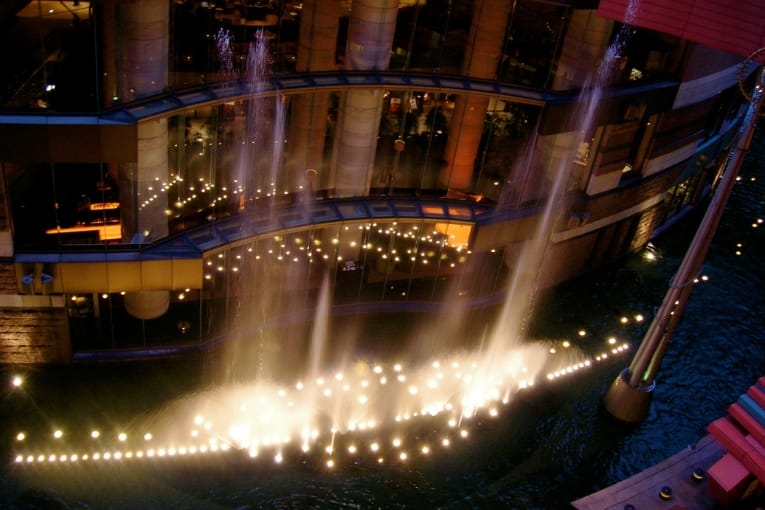
Photo Credit: FlyingToaster / Wikipedia
Canal City Hakata is a sprawling shopping and entertainment complex known for its unique design featuring a canal. With its array of shops, restaurants, theaters, and a water show, it offers a lively atmosphere and an immersive shopping experience. It’s a microcosm of urban entertainment, often hosting events and performances that add to its vibrant charm.
- Trip Plan: Spend a few hours to a half-day for shopping, dining, and entertainment.
- Trip Budget: Free to explore; budget for shopping and dining.
- Best Time to Visit: Any day, particularly vibrant in the evenings.
- Best Things to Do: Shop at various stores, enjoy the water show, and visit the cinema or theater.
- Nearest Airports: Fukuoka Airport.
- Transports to Use: Short walk from Hakata Station or Gion Subway Station.
- Near Tourist Attractions in Fukuoka: Kushida Shrine, Hakata Machiya Folk Museum.
- Best Foods to Eat: Diverse dining options, from fast food to gourmet restaurants.
- Best Places to Stay: Accommodations in Hakata for proximity.
- Travel Tips: Check the schedule for events and shows in the complex.
4. Fukuoka Tower
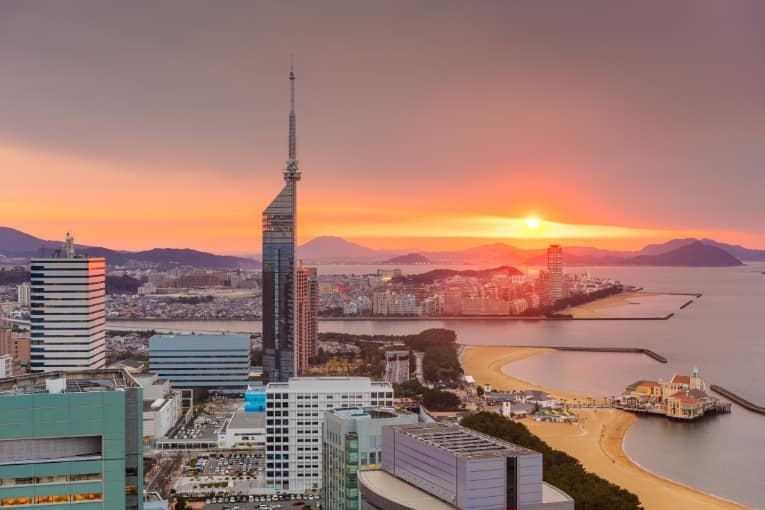
Standing as a symbol of the city, Fukuoka Tower is the tallest seaside tower in Japan. This 234-meter tall structure offers an unparalleled panoramic view of Fukuoka City and Hakata Bay. Its mirrored exterior is a striking feature, especially when illuminated at night. The tower’s observation decks provide a stunning vantage point to witness the city’s landscape and beyond.
- Trip Plan: About 1 hour to enjoy the view from the observation deck.
- Trip Budget: Approximately $8 USD for tower admission.
- Best Time to Visit: Clear days for views; sunset and evening for city lights.
- Best Things to Do: Visit the observation deck, take photos, and explore the surrounding Momochi Seaside Park.
- Nearest Airports: Fukuoka Airport.
- Transports to Use: Bus from Tenjin or Hakata Station.
- Near Tourist Attractions in Fukuoka: Momochi Beach, Robosquare.
- Best Foods to Eat: Restaurants in the tower and nearby areas.
- Best Places to Stay: Hotels in the Momochi area or central Fukuoka.
- Travel Tips: Visit during sunset for a spectacular view.
5. Marine World Uminonakamichi
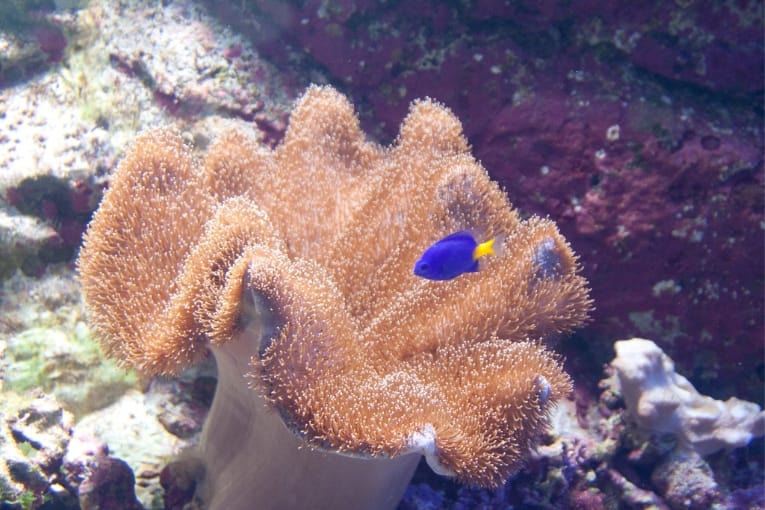
Photo Credit: Jepster / Flickr
Marine World Uminonakamichi is an expansive aquarium located on the scenic Uminonakamichi Seaside Park. It showcases diverse marine life from around the world in impressive exhibits, including a massive ocean tank, a dolphin lagoon, and rare deep-sea creatures. The aquarium not only educates about marine biodiversity but also emphasizes conservation efforts, making it a meaningful visit for all ages.
- Trip Plan: Allocate half a day to fully enjoy the aquarium.
- Trip Budget: Around $20 USD for admission.
- Best Time to Visit: Weekdays for fewer crowds; open year-round.
- Best Things to Do: Watch the dolphin and sea lion shows, visit the large ocean tank, and interact with sea creatures.
- Nearest Airports: Fukuoka Airport.
- Transports to Use: Train to Uminonakamichi Station, then a short bus ride.
- Near Tourist Attractions in Fukuoka: Uminonakamichi Seaside Park, Shikanoshima Island.
- Best Foods to Eat: Dining options within the aquarium offer seafood and kid-friendly meals.
- Best Places to Stay: Stay in central Fukuoka for access to city attractions.
- Travel Tips: Check show times in advance to plan your visit.
6. Uminonakamichi Seaside Park
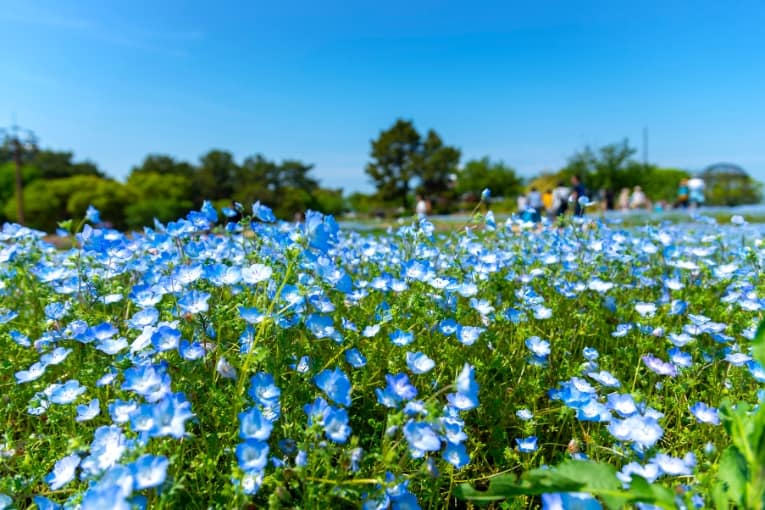
A sprawling park located on a narrow peninsula, Uminonakamichi Seaside Park is renowned for its seasonal flowers, cycling paths, and picnic areas. With playgrounds, an amusement park, and various sports facilities, it offers a day of fun and relaxation for families and nature lovers. The park transforms with cherry blossoms in spring, colorful flowers in summer, and vibrant foliage in autumn.
- Trip Plan: Dedicate a full day to explore the park’s various attractions.
- Trip Budget: Park entry is around $3 USD, with additional fees for attractions inside.
- Best Time to Visit: Enjoyable year-round, with each season offering a different scenic beauty.
- Best Things to Do: Rent a bike to explore, enjoy seasonal flowers, visit the animal park, and relax on the beach.
- Nearest Airports: Fukuoka Airport.
- Transports to Use: Train to Uminonakamichi Station, then walk or rent a bike.
- Near Tourist Attractions in Fukuoka: Marine World Uminonakamichi, Shikanoshima Island.
- Best Foods to Eat: Picnic with local snacks or dine at park restaurants.
- Best Places to Stay: Central Fukuoka or accommodations near Hakata Bay.
- Travel Tips: Ideal for families; check the flower blooming schedule before visiting.
7. Hakata Machiya Folk Museum
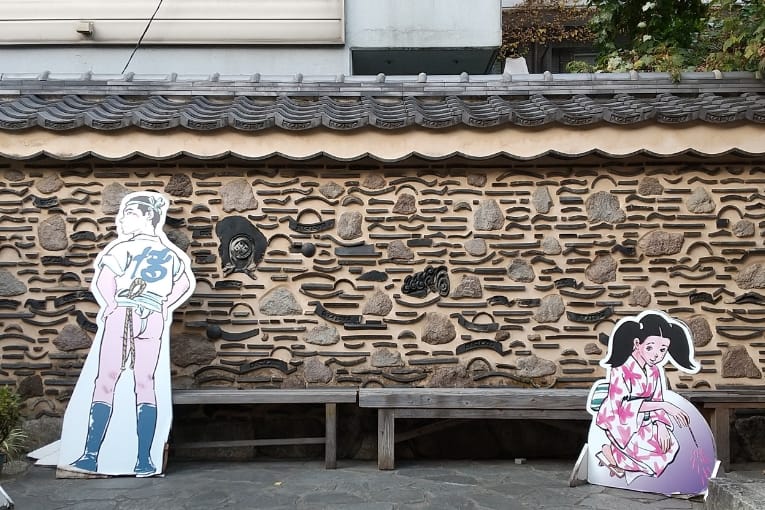
Photo Credit: Hirho / Wikipedia
Situated in the historic Hakata district, this folk museum offers a glimpse into the traditional lifestyle and culture of Fukuoka. It features reconstructed townhouses from the late Meiji and Taisho periods, showcasing local crafts, daily life, and festivals. The museum provides a hands-on experience with interactive exhibits and craft workshops, making it a cultural treasure in the heart of the city.
- Trip Plan: Spend about 1-2 hours exploring the museum and nearby attractions.
- Trip Budget: Approximately $2-3 USD for admission.
- Best Time to Visit: Anytime, but especially interesting during local festivals.
- Best Things to Do: Explore traditional houses, participate in craft workshops, and learn about Hakata’s history.
- Nearest Airports: Fukuoka Airport.
- Transports to Use: Short walk from Gion Subway Station or Hakata Station.
- Near Tourist Attractions in Fukuoka: Kushida Shrine, Canal City Hakata.
- Best Foods to Eat: Sample traditional Japanese dishes in the Hakata area.
- Best Places to Stay: Hotels in Hakata for a mix of traditional and modern experiences.
- Travel Tips: Check for special events and craft demonstrations.
8. Fukuoka Asian Art Museum
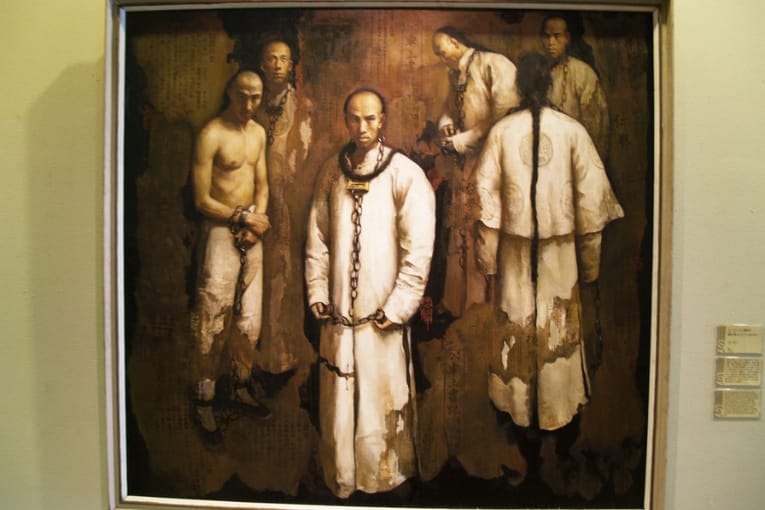
Photo Credit: Richard Lee / Flickr
The Fukuoka Asian Art Museum is dedicated to modern and contemporary Asian art, showcasing an extensive collection from various Asian countries. It offers a platform for cultural exchange and understanding through art, featuring paintings, sculptures, and installations. The museum hosts rotating exhibitions, artist residencies, and educational programs, making it a dynamic center for appreciating Asia’s artistic diversity.
- Trip Plan: Allocate 2-3 hours for museum exploration and special exhibitions.
- Trip Budget: Around $5-7 USD for admission, depending on exhibitions.
- Best Time to Visit: Visit during special exhibitions for unique artistic experiences.
- Best Things to Do: View the art collections, attend workshops or talks, and explore the museum’s library.
- Nearest Airports: Fukuoka Airport.
- Transports to Use: Subway to Tenjin Station, then walk.
- Near Tourist Attractions in Fukuoka: Tenjin shopping district, Ohori Park.
- Best Foods to Eat: Cafes and restaurants in the Tenjin area offer a variety of dining options.
- Best Places to Stay: Stay in Tenjin for cultural and shopping experiences.
- Travel Tips: Check the museum’s schedule for current and upcoming exhibitions.
9. Nokonoshima Island Park

A short ferry ride from Fukuoka City, Nokonoshima Island Park is a haven of natural beauty and tranquility. The park is famous for its seasonal flower fields, with vibrant displays throughout the year. Visitors can enjoy hiking trails, barbecue areas, and stunning views of Hakata Bay. The island also hosts cultural events and traditional craft workshops, offering a peaceful escape from the urban hustle.
- Trip Plan: Spend a half-day or full day for a complete island experience.
- Trip Budget: Ferry and park entry combined are about $15 USD.
- Best Time to Visit: Spring for cherry blossoms and rapeseed flowers, autumn for cosmos flowers.
- Best Things to Do: Enjoy flower viewing, hike around the island, and participate in cultural activities.
- Nearest Airports: Fukuoka Airport.
- Transports to Use: Bus to Meinohama Ferry Terminal, then a ferry ride.
- Near Tourist Attractions in Fukuoka: Explore other parts of the island for scenic views and local culture.
- Best Foods to Eat: Island cafes and restaurants offer fresh seafood and local dishes.
- Best Places to Stay: Accommodations in Fukuoka city for day trips to the island.
- Travel Tips: Check ferry times in advance and plan for seasonal events on the island.
10. Kushida Shrine
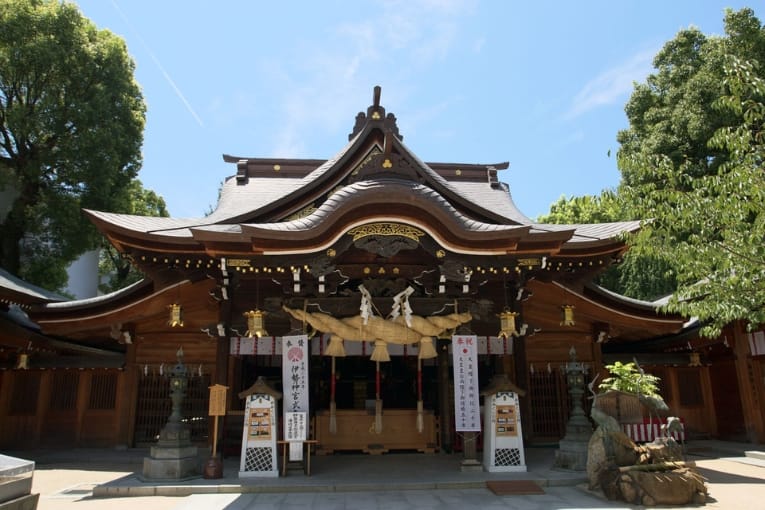
Photo Credit: Pontafon / Wikipedia
Kushida Shrine, nestled in the heart of Fukuoka’s Hakata district, is a Shinto shrine with deep historical and cultural significance. Known for hosting the famous Hakata Gion Yamakasa festival, the shrine is a symbol of the city’s heritage. Its grounds feature several ancient relics, a sacred ginkgo tree, and traditional architecture. The shrine is a spiritual center for locals and offers a serene atmosphere for visitors.
- Trip Plan: Spend about an hour exploring the shrine and its surroundings.
- Trip Budget: Free admission; fees for special rituals or amulets.
- Best Time to Visit: Early morning for a peaceful experience or during the Hakata Gion Yamakasa festival in July.
- Best Things to Do: Witness traditional rituals, explore the festival museum, and admire the shrine’s architecture.
- Nearest Airports: Fukuoka Airport.
- Transports to Use: Short walk from Gion Subway Station or Canal City Hakata.
- Near Tourist Attractions in Fukuoka: Canal City Hakata, Hakata Machiya Folk Museum.
- Best Foods to Eat: Try Hakata ramen and other local specialties in nearby restaurants.
- Best Places to Stay: Hotels in the Hakata area for easy access to traditional and modern attractions.
- Travel Tips: Visit during the festival season for a unique cultural experience.
11. Fukuoka Castle Ruins
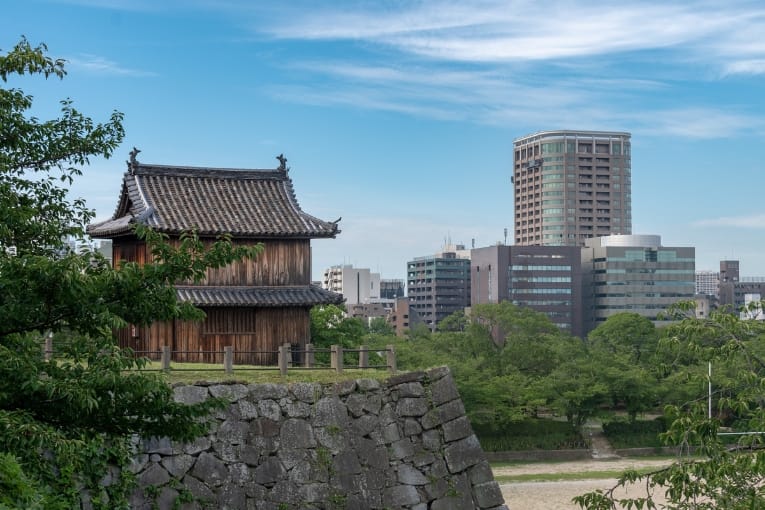
Photo Credit: xiquinhosilva / Flickr
The remnants of Fukuoka Castle, once one of Kyushu’s largest castles, offer a glimpse into the city’s samurai past. Located in Maizuru Park, the ruins include stone walls, turrets, and gates surrounded by greenery. The area becomes particularly popular during cherry blossom season, providing a beautiful blend of historical architecture and natural beauty. The site is a testament to Fukuoka’s historical significance and a favorite spot for leisurely walks and historical exploration.
- Trip Plan: Spend 1-2 hours exploring the ruins and surrounding park.
- Trip Budget: Free admission.
- Best Time to Visit: Spring for cherry blossoms, pleasant year-round.
- Best Things to Do: Stroll through the ruins, enjoy cherry blossom viewing, and visit nearby Ohori Park.
- Nearest Airports: Fukuoka Airport.
- Transports to Use: Subway to Ohori Koen or Akasaka Station, then walk.
- Near Tourist Attractions in Fukuoka: Ohori Park, Fukuoka Art Museum.
- Best Foods to Eat: Sample street food from vendors during cherry blossom season or visit nearby cafes.
- Best Places to Stay: Choose accommodations in Tenjin or Hakata for central access.
- Travel Tips: The area is particularly beautiful during the Sakura season, so be sure to check the cherry blossom forecast.
12. Shofukuji Temple
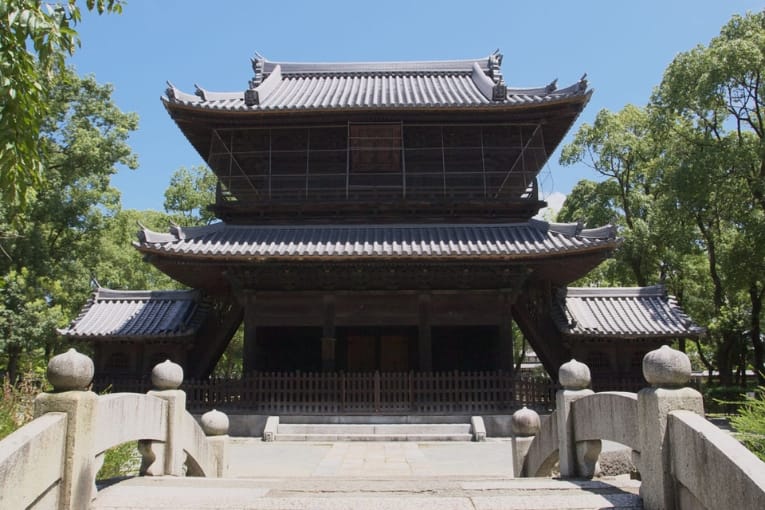
Photo Credit: Pontafon / Wikipedia
Shofukuji Temple holds the distinction of being Japan’s first Zen temple, established in 1195. Its tranquil setting, historic buildings, and beautiful Zen garden offer a serene escape from the bustling city. The temple’s atmosphere is steeped in history, with its ancient architecture and peaceful surroundings inviting visitors to reflect and unwind. It’s a significant cultural site, not just for Fukuoka but for the whole of Japan, marking the introduction of Zen Buddhism to the country.
- Trip Plan: Allocate about 1 hour for a peaceful visit.
- Trip Budget: Free to visit; donations are welcome.
- Best Time to Visit: Year-round, with each season offering a different serene beauty.
- Best Things to Do: Explore the temple grounds, meditate in the Zen garden, and appreciate the historic architecture.
- Nearest Airports: Fukuoka Airport.
- Transports to Use: Short walk from Gion Subway Station.
- Near Tourist Attractions in Fukuoka: Kushida Shrine, Hakata Machiya Folk Museum.
- Best Foods to Eat: Try traditional Japanese sweets and tea in the temple area.
- Best Places to Stay: Stay in Hakata for easy access to historical sites.
- Travel Tips: The temple is an active place of worship, so be respectful of the serene environment.
13. Tochoji Temple
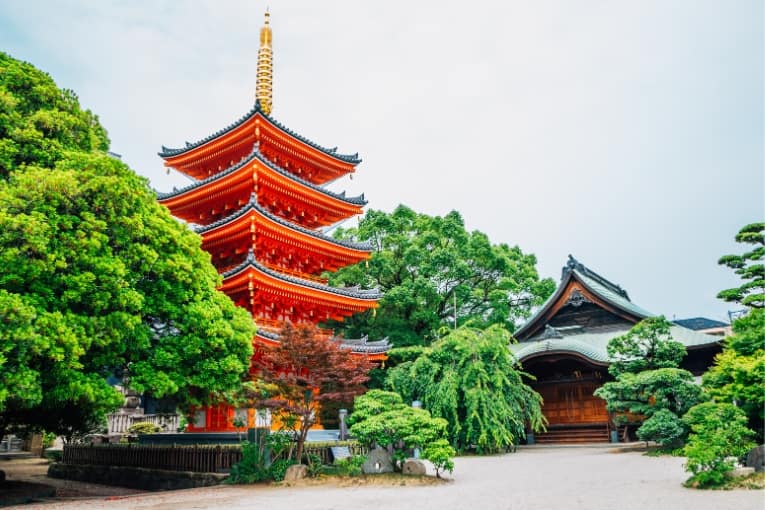
Famous for housing Japan’s largest wooden seated Buddha, Tochoji Temple is a significant historical and cultural landmark in Fukuoka. The temple, with its striking red pagoda, offers a fascinating insight into Japanese Buddhism. The Buddha statue, standing at an impressive height, is an awe-inspiring sight, and visitors can also explore the intricate hell paintings and the peaceful temple garden. Tochoji provides a spiritual and cultural experience, reflecting the deep Buddhist roots in Fukuoka.
- Trip Plan: Spend about an hour exploring the temple and its Buddha statue.
- Trip Budget: Free admission; donations appreciated.
- Best Time to Visit: Open year-round, ideal for spiritual and cultural exploration.
- Best Things to Do: View the giant Buddha statue, explore the temple grounds, and visit the pagoda.
- Nearest Airports: Fukuoka Airport.
- Transports to Use: Short walk from Gion Subway Station.
- Near Tourist Attractions in Fukuoka: Kushida Shrine, Hakata Machiya Folk Museum.
- Best Foods to Eat: Enjoy traditional Japanese cuisine in the surrounding Hakata district.
- Best Places to Stay: Hotels in Hakata for a mix of culture and convenience.
- Travel Tips: Visit during Buddhist festivals for a unique cultural experience.
14. Nakasu Nightlife District
Nakasu, nestled between the Naka and Hakata rivers, is Fukuoka’s bustling entertainment and nightlife hub. The district comes alive at night with its array of izakayas, bars, clubs, and street food stalls. The area is famous for its yatai, open-air food stalls, offering a variety of local dishes, including the renowned Hakata ramen. Nakasu’s vibrant atmosphere, neon lights, and diverse dining and entertainment options make it a must-visit for those looking to experience Fukuoka’s lively nightlife.
- Trip Plan: Spend an evening exploring the area’s dining and entertainment options.
- Trip Budget: Varies by dining and entertainment choices.
- Best Time to Visit: Evenings, especially lively on weekends.
- Best Things to Do: Dine at Yatai stalls, enjoy the nightlife, and stroll along the riverside.
- Nearest Airports: Fukuoka Airport.
- Transports to Use: Short walk from Nakasu-Kawabata Subway Station.
- Near Tourist Attractions in Fukuoka: Canal City Hakata, Kushida Shrine.
- Best Foods to Eat: Sample local street food, especially Hakata ramen and grilled skewers.
- Best Places to Stay: Hotels in Tenjin or Hakata for proximity to nightlife.
- Travel Tips: Try different yatai for a variety of local flavors.
15. Fukuoka City Science Museum
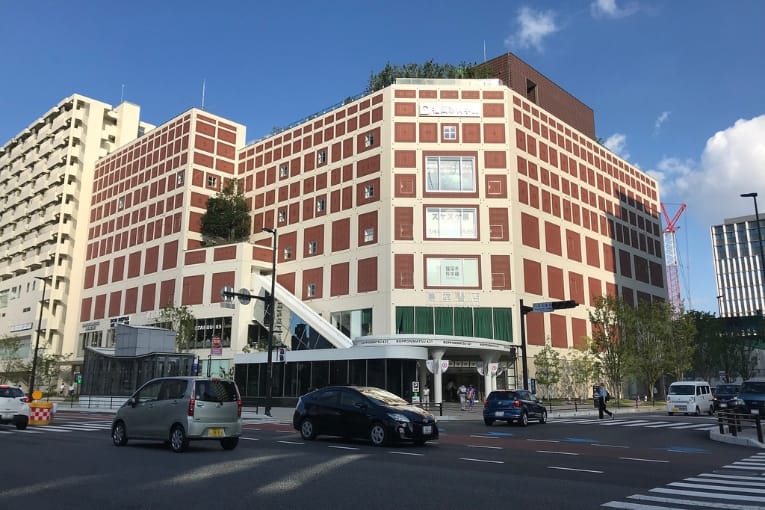
Photo Credit: そらみみ / Wikipedia
A haven for science enthusiasts, the Fukuoka City Science Museum offers interactive exhibits on a wide range of scientific topics, from astronomy to robotics. The museum features a planetarium, hands-on science labs, and educational workshops, making it a perfect destination for families and curious minds. Its engaging displays and experiments provide fun learning experiences, highlighting the wonders of science and technology.
- Trip Plan: Spend 2-3 hours exploring the exhibits and attending a planetarium show.
- Trip Budget: Around $6 USD for museum entry; additional fees for the planetarium.
- Best Time to Visit: Ideal for a day out with kids, open year-round.
- Best Things to Do: Participate in interactive exhibits, attend a planetarium show, and engage in science workshops.
- Nearest Airports: Fukuoka Airport.
- Transports to Use: Subway to Hakata Station, then a short walk.
- Near Tourist Attractions in Fukuoka: Canal City Hakata, Kushida Shrine.
- Best Foods to Eat: Cafes within the museum offer kid-friendly meals and snacks.
- Best Places to Stay: Choose accommodations in Hakata for easy access to city attractions.
- Travel Tips: Check the museum’s schedule for special exhibits and events.
16. Yanagibashi Rengo Market
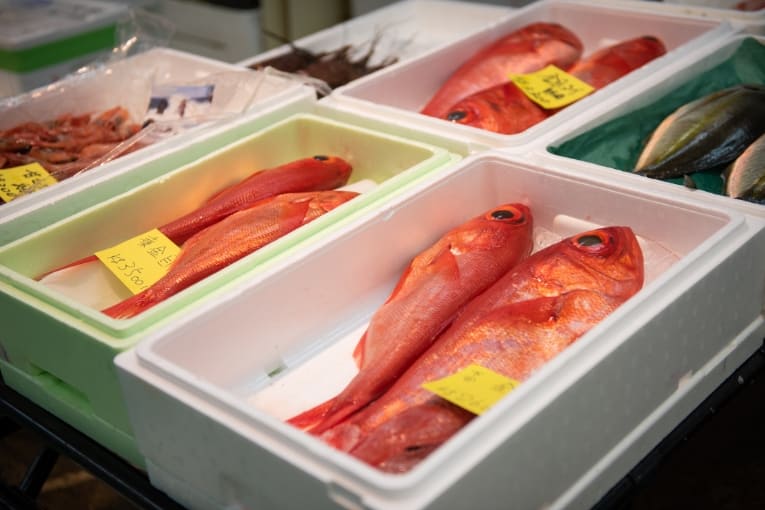
Known as “Fukuoka’s Kitchen,” Yanagibashi Rengo Market is a bustling marketplace where locals and chefs come to buy fresh produce, seafood, and other ingredients. The market offers an authentic glimpse into Fukuoka’s culinary scene, with vendors selling everything from locally caught fish to fruits. It’s not only a place for shopping but also a cultural experience, where visitors can feel the vibrant energy and taste the flavors of Fukuoka.
- Trip Plan: Allocate about 1-2 hours for market exploration and tasting.
- Trip Budget: Free to visit; budget for food purchases.
- Best Time to Visit: Mornings for the freshest produce, open daily except Sundays.
- Best Things to Do: Explore the stalls, sample local delicacies, and experience the lively atmosphere.
- Nearest Airports: Fukuoka Airport.
- Transports to Use: Short walk from Tenjin Station.
- Near Tourist Attractions in Fukuoka: Tenjin shopping district, Ohori Park.
- Best Foods to Eat: Fresh sushi, sashimi, and street food snacks.
- Best Places to Stay: Accommodations in Tenjin for a central location.
- Travel Tips: Visit early for the best selection and to see the market in full swing.
17. Momochi Seaside Park
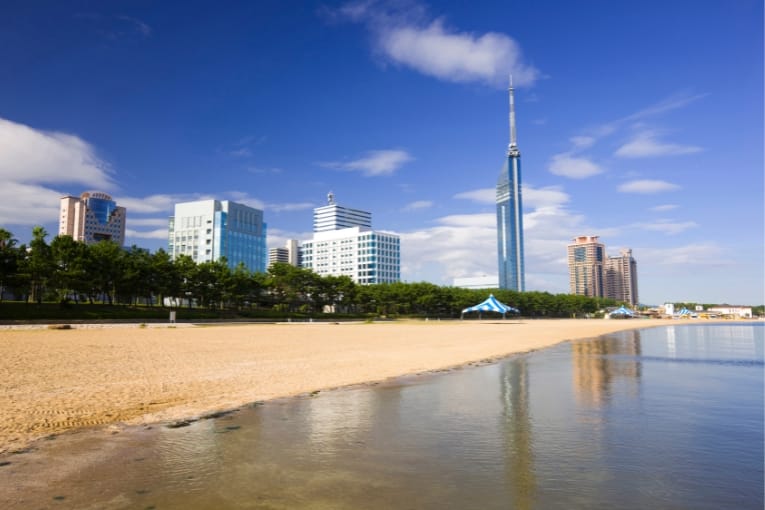
A modern waterfront area in Fukuoka, Momochi Seaside Park features a beautiful artificial beach, lush green spaces, and striking contemporary architecture, including Fukuoka Tower. It’s a popular spot for relaxation, water sports, and enjoying the urban seaside atmosphere. The area also hosts various events and festivals, making it a lively destination for both relaxation and entertainment against the backdrop of Hakata Bay.
- Trip Plan: Spend a few hours to a half-day enjoying the beach and surrounding attractions.
- Trip Budget: Free to visit; costs for water sports and other activities.
- Best Time to Visit: Summer for beach activities, enjoyable year-round.
- Best Things to Do: Relax on the beach, visit Fukuoka Tower, and explore the waterfront area.
- Nearest Airports: Fukuoka Airport.
- Transports to Use: Bus from Tenjin or Hakata Station.
- Near Tourist Attractions in Fukuoka: Fukuoka Tower, Robosquare.
- Best Foods to Eat: Beachside cafes and restaurants offer a variety of dining options.
- Best Places to Stay: Hotels in the Momochi area or central Fukuoka.
- Travel Tips: Check for seasonal events and water sports availability.
18. Fukuoka Art Museum

Photo Credit: Jennifer Morrow / Flickr
Nestled in the serene environment of Ohori Park, the Fukuoka Art Museum is a cultural landmark showcasing a diverse collection of art. The museum’s exhibits range from ancient artifacts to modern and contemporary art, featuring both Japanese and international artists. With its rotating exhibitions, educational programs, and tranquil setting, the museum provides a space for artistic contemplation and inspiration.
- Trip Plan: Allocate 2-3 hours for museum exploration and relaxation in Ohori Park.
- Trip Budget: Around $6 USD for museum entry; special exhibitions may have additional fees.
- Best Time to Visit: Visit during special exhibitions or art events.
- Best Things to Do: View art collections, attend workshops, and relax in the park.
- Nearest Airports: Fukuoka Airport.
- Transports to Use: Subway to Ohori Koen Station, then walk.
- Near Tourist Attractions in Fukuoka: Ohori Park, Fukuoka Castle Ruins.
- Best Foods to Eat: The museum cafe offers light meals and an artistic ambiance.
- Best Places to Stay: Choose accommodations in Tenjin or near Ohori Park.
- Travel Tips: Check the museum’s website for current and upcoming exhibitions.
19. Kyushu National Museum
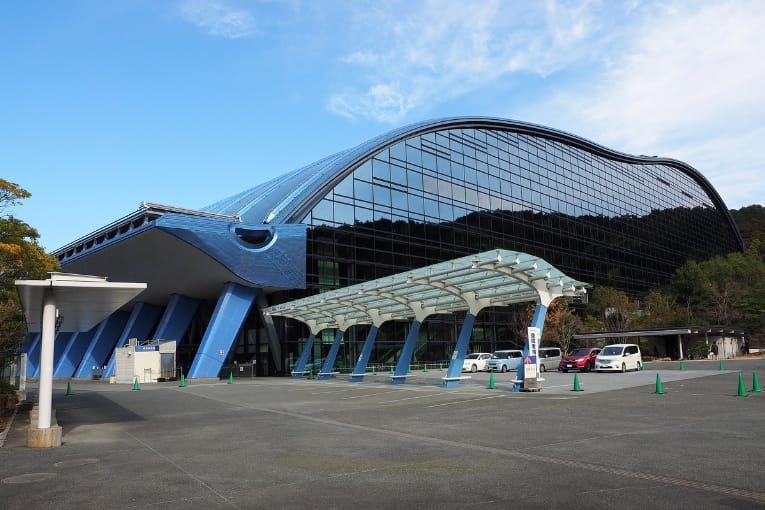
Photo Credit: Nick-D / Wikipedia
As one of Japan’s four national museums, the Kyushu National Museum is an architectural marvel that offers insights into Japanese history and culture, with a focus on Kyushu’s historical interactions with Asia. The museum’s collections include cultural artifacts, art pieces, and historical documents. Its exhibitions and cultural programs make it a hub for learning and understanding the rich heritage of Japan and its connections with neighboring countries.
- Trip Plan: Spend about 3-4 hours exploring the exhibits and attending cultural programs.
- Trip Budget: Approximately $10 USD for admission; special exhibitions may cost extra.
- Best Time to Visit: Anytime, with changing exhibitions offering new perspectives.
- Best Things to Do: Explore the permanent and special exhibitions, attend lectures, and visit the museum shop.
- Nearest Airports: Fukuoka Airport.
- Transports to Use: Train to Dazaifu Station, then a short walk.
- Near Tourist Attractions in Fukuoka: Dazaifu Tenmangu Shrine, Komyozenji Temple.
- Best Foods to Eat: Museum restaurants and cafes offer a variety of dining options.
- Best Places to Stay: Stay in central Fukuoka or near Dazaifu for cultural exploration.
- Travel Tips: Allocate enough time to fully appreciate the extensive collections and exhibitions.
20. Hakozaki Shrine
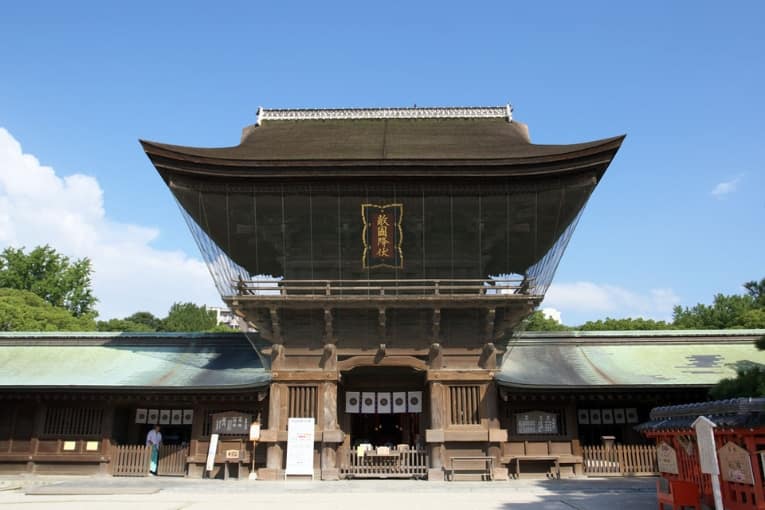
Photo Credit: Pontafon / Wikipedia
One of Fukuoka’s major Shinto shrines, Hakozaki Shrine is steeped in history and tradition. Revered for its connection to the ancient samurai and the Mongol invasions, the shrine is a site of cultural and spiritual significance. Its grounds feature impressive torii gates, a treasure hall, and beautifully maintained gardens. The shrine is particularly famous for its Tamaseseri Festival and Hojoya Festival, attracting visitors for both its historical importance and festive atmosphere.
- Trip Plan: Spend about 1-2 hours exploring the shrine and its surroundings.
- Trip Budget: Free admission; fees for special rituals or amulets.
- Best Time to Visit: Festival periods for a vibrant experience, tranquil otherwise.
- Best Things to Do: Witness traditional rituals, explore the treasure hall, and attend the annual festivals.
- Nearest Airports: Fukuoka Airport.
- Transports to Use: Subway to Hakozaki-Miyamae Station, then walk.
- Near Tourist Attractions in Fukuoka: Explore the historical Hakozaki area.
- Best Foods to Eat: Try local street food and traditional Japanese cuisine in the area.
- Best Places to Stay: Accommodations in central Fukuoka for easy city access.
- Travel Tips: Visit during the Tamaseseri or Hojoya Festival for a unique cultural experience.
21. Nanzoin Temple
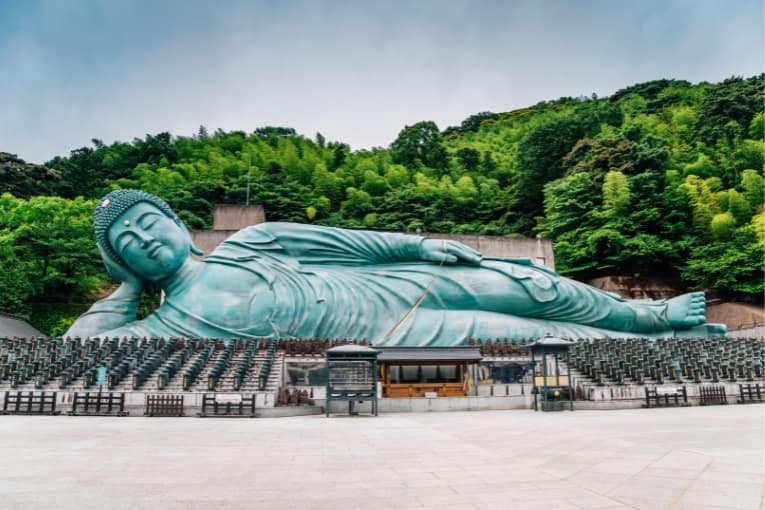
Nanzoin Temple is a serene Buddhist temple complex known for its giant reclining Buddha statue, said to be one of the largest bronze statues in the world. Set in a peaceful forest, the temple offers a spiritual retreat with its prayer halls, pagodas, and verdant gardens. Visitors can enjoy the calming atmosphere, partake in temple rituals, and explore the various Buddhist sculptures and artifacts scattered throughout the grounds.
- Trip Plan: Spend about 2-3 hours for a comprehensive visit.
- Trip Budget: Free admission; donations are appreciated.
- Best Time to Visit: Pleasant year-round, particularly peaceful during weekdays.
- Best Things to Do: View the reclining Buddha, participate in temple rituals, and explore the forested area.
- Nearest Airports: Fukuoka Airport.
- Transports to Use: Train to Kido-Nanzoin-Mae Station, then a short walk.
- Near Tourist Attractions in Fukuoka: Explore the surrounding rural area for a break from the city.
- Best Foods to Eat: Sample vegetarian cuisine and traditional Japanese snacks available at temple stalls.
- Best Places to Stay: Stay in central Fukuoka or nearby Sasaguri for a tranquil experience.
- Travel Tips: Wear comfortable shoes for walking through the temple grounds.
22. Tenjin Underground Shopping Center

Located beneath the streets of Fukuoka’s Tenjin area, this extensive underground shopping center offers a wide array of shops, boutiques, and eateries. It’s a bustling hub for fashion, lifestyle goods, and gourmet food, providing a unique shopping experience. The center connects to various subway stations, making it an accessible and convenient destination for visitors and locals alike. Whether looking for the latest trends, unique souvenirs, or delicious food, the Tenjin Underground Shopping Center has something for everyone.
- Trip Plan: Spend a few hours to a half-day exploring shops and dining.
- Trip Budget: Varies by shopping and dining choices.
- Best Time to Visit: Any day, particularly lively during shopping hours.
- Best Things to Do: Shop for fashion and souvenirs, enjoy diverse dining options, and experience the lively atmosphere.
- Nearest Airports: Fukuoka Airport.
- Transports to Use: Directly accessible from Tenjin Subway Station.
- Near Tourist Attractions in Fukuoka: Tenjin area attractions, Fukuoka Art Museum.
- Best Foods to Eat: Sample a variety of cuisines from casual eateries to gourmet restaurants.
- Best Places to Stay: Hotels in Tenjin for shopping convenience.
- Travel Tips: Explore the connecting department stores and nearby attractions for a full day of shopping and entertainment.
23. Acros Fukuoka
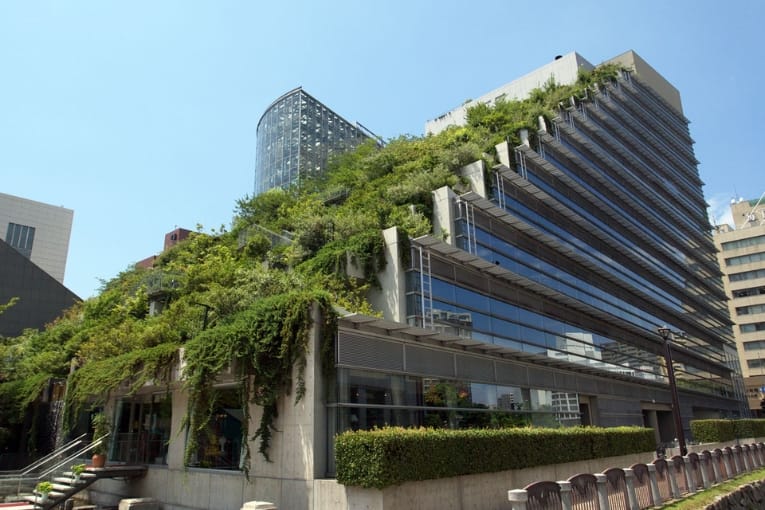
Photo Credit: Pontafon / Wikipedia
Acros Fukuoka is an architectural marvel in the heart of the city, known for its innovative green terraced design that merges urban structure with nature. This multi-purpose complex includes a symphony hall, conference rooms, and exhibition spaces, but it’s most famous for its “Step Garden,” which ascends the building’s facade. The garden features a wide variety of plants and offers a unique spot for relaxation and enjoyment within the urban landscape.
- Trip Plan: Spend 1-2 hours exploring the building and relaxing in the Step Garden.
- Trip Budget: Free to visit the garden and public areas.
- Best Time to Visit: Open year-round, the garden is particularly lush in spring and summer.
- Best Things to Do: Relax in the Step Garden, explore the building’s architecture, and attend events if available.
- Nearest Airports: Fukuoka Airport.
- Transports to Use: Short walk from Tenjin Subway Station.
- Near Tourist Attractions in Fukuoka: Tenjin shopping district, Ohori Park.
- Best Foods to Eat: Restaurants and cafes in the building and nearby areas offer a variety of options.
- Best Places to Stay: Accommodations in Tenjin or near Ohori Park.
- Travel Tips: Visit the rooftop for a panoramic view of the city.
24. Maizuru Park
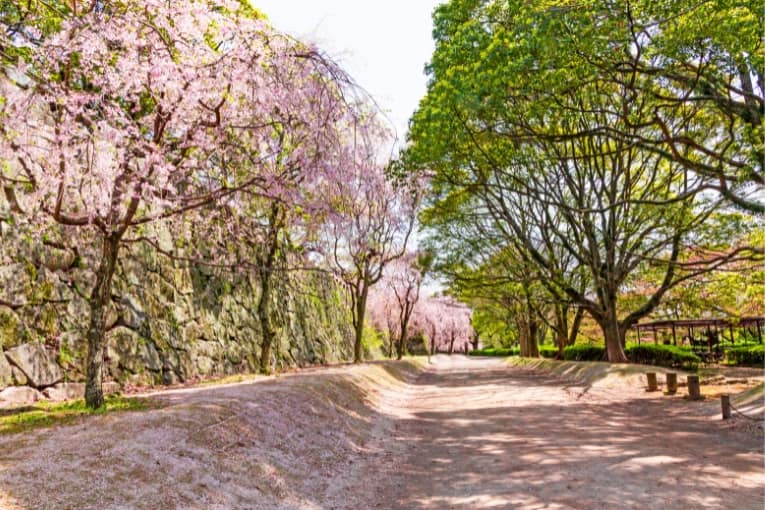
Surrounding the ruins of Fukuoka Castle, Maizuru Park is a sprawling green space that blends historical significance with natural beauty. It’s particularly famous for its cherry blossoms in spring, attracting visitors for hanami (flower viewing) parties. The park, with its walking trails, open lawns, and seasonal flowers, provides a serene environment for relaxation and leisure activities. It’s a favorite spot for locals and tourists to enjoy the outdoors and appreciate the historical backdrop.
- Trip Plan: Spend 1-2 hours exploring the park and castle ruins.
- Trip Budget: Free admission.
- Best Time to Visit: Spring for cherry blossoms, enjoyable year-round.
- Best Things to Do: Enjoy cherry blossom viewing, explore Fukuoka Castle ruins, and relax in the green spaces.
- Nearest Airports: Fukuoka Airport.
- Transports to Use: Subway to Ohori Koen or Akasaka Station, then walk.
- Near Tourist Attractions in Fukuoka: Ohori Park, Fukuoka Art Museum.
- Best Foods to Eat: Street food vendors during cherry blossom season or nearby cafes.
- Best Places to Stay: Choose accommodations in Tenjin or Hakata for central access.
- Travel Tips: Visit during Sakura season for stunning cherry blossom views.
25. Shikanoshima Island
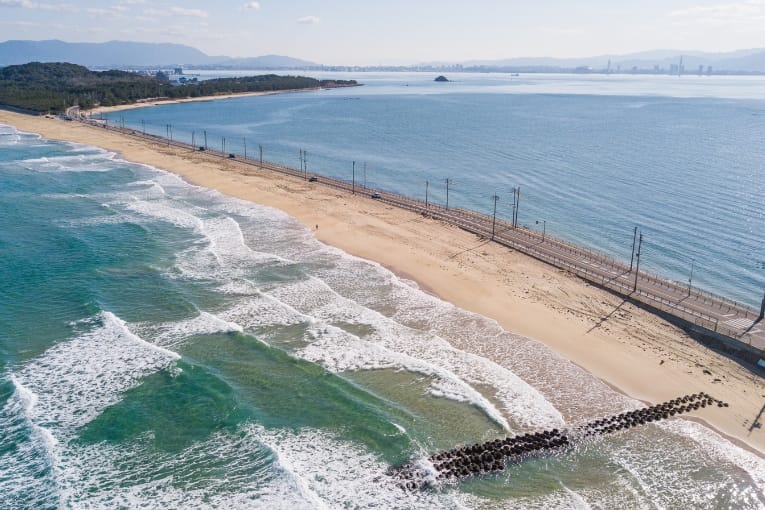
Shikanoshima Island, located in Hakata Bay, is a picturesque island known for its beautiful beaches, historical sites, and scenic hiking trails. The island is rich in history, with ancient artifacts discovered that link it to Japan’s early trade with the Asian mainland. Visitors can enjoy a variety of activities, including beach swimming, exploring ancient shrines, and enjoying fresh seafood. It’s a perfect day-trip destination for those looking to experience natural beauty and historical intrigue.
- Trip Plan: Spend a full day exploring the island’s beaches and cultural sites.
- Trip Budget: Ferry and bus fares; budget for food and activities.
- Best Time to Visit: Summer for beach activities, pleasant for hiking and exploration year-round.
- Best Things to Do: Visit the Kin-in Park, explore the Shikaumi Shrine, and relax on the beaches.
- Nearest Airports: Fukuoka Airport.
- Transports to Use: Bus to Hakata Port, then a ferry ride to the island.
- Near Tourist Attractions in Fukuoka: Uminonakamichi Seaside Park, Marine World Uminonakamichi.
- Best Foods to Eat: Enjoy fresh seafood at local restaurants.
- Best Places to Stay: Accommodations in Fukuoka city for day trips to the island.
- Travel Tips: Check ferry times in advance and explore the island by rental bicycle for a unique experience.
26. Kawachi Fujien Wisteria Garden
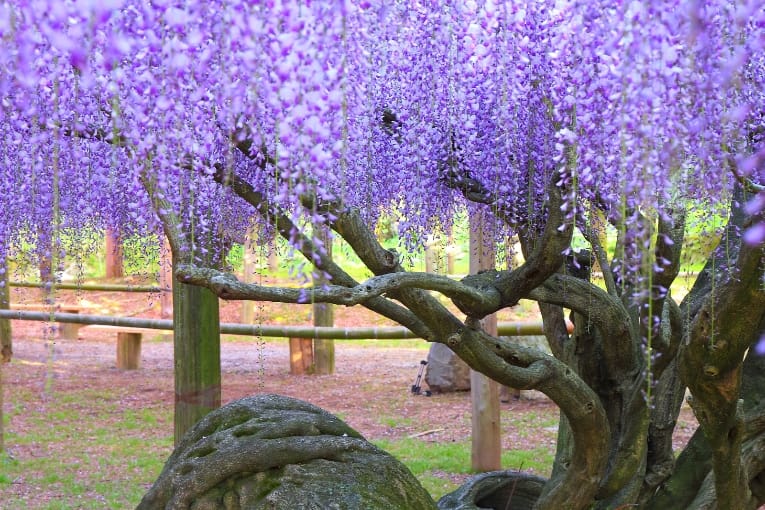
Kawachi Fujien Wisteria Garden is a private garden famed for its stunning wisteria tunnels and vibrant flower displays. The garden’s wisteria varieties bloom in cascades of purple, white, and pink, creating a mesmerizing spectacle in spring. Along with the wisteria, the garden features azaleas and other seasonal flowers, making it a botanical paradise. It’s a must-visit for nature lovers and photographers, especially during the wisteria season.
- Trip Plan: Allocate about 1-2 hours for a leisurely stroll through the garden.
- Trip Budget: Entry fee varies based on the blooming season, around $3-15 USD.
- Best Time to Visit: Late April to early May for wisteria bloom; check the blooming forecast.
- Best Things to Do: Walk through the wisteria tunnels, photograph the stunning blooms, and enjoy the serene environment.
- Nearest Airports: Fukuoka Airport.
- Transports to Use: Bus or car from central Fukuoka; parking available.
- Near Tourist Attractions in Fukuoka: Explore the surrounding countryside.
- Best Foods to Eat: Light snacks and refreshments are available on-site.
- Best Places to Stay: Stay in Fukuoka city and make a day trip to the garden.
- Travel Tips: Visit early in the morning or on weekdays to avoid crowds; advanced reservations may be required.
27. Hakata Riverain
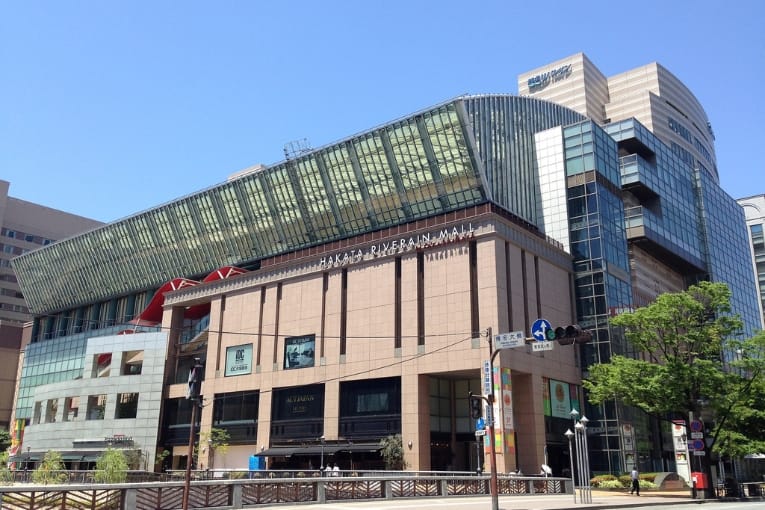
Photo Credit: Jojimuke / Wikipedia
Hakata Riverain is a multifaceted complex located along the Nakagawa River, offering a mix of shopping, dining, culture, and entertainment. The complex includes the Fukuoka Asian Art Museum, a theater, and a variety of shops and restaurants. It’s a popular destination for both locals and tourists, offering scenic river views and a vibrant atmosphere. Whether it’s for cultural activities, shopping, or enjoying a meal with a view, Hakata Riverain has something for everyone.
- Trip Plan: Spend a few hours shopping, dining, and exploring cultural attractions.
- Trip Budget: Free to visit; budget for shopping, dining, and museum or theater tickets.
- Best Time to Visit: Any time of day; evenings offer a beautiful riverside ambiance.
- Best Things to Do: Shop for unique items, dine at riverside restaurants, and visit the Fukuoka Asian Art Museum.
- Nearest Airports: Fukuoka Airport.
- Transports to Use: Short walk from Nakasu-Kawabata Subway Station.
- Near Tourist Attractions in Fukuoka: Kushida Shrine, Canal City Hakata.
- Best Foods to Eat: Enjoy a variety of cuisines at the complex’s restaurants.
- Best Places to Stay: Hotels in the Nakasu or Tenjin area for easy access.
- Travel Tips: Check for events and exhibitions happening in the complex.
28. Fukuoka City Zoo and Botanical Garden
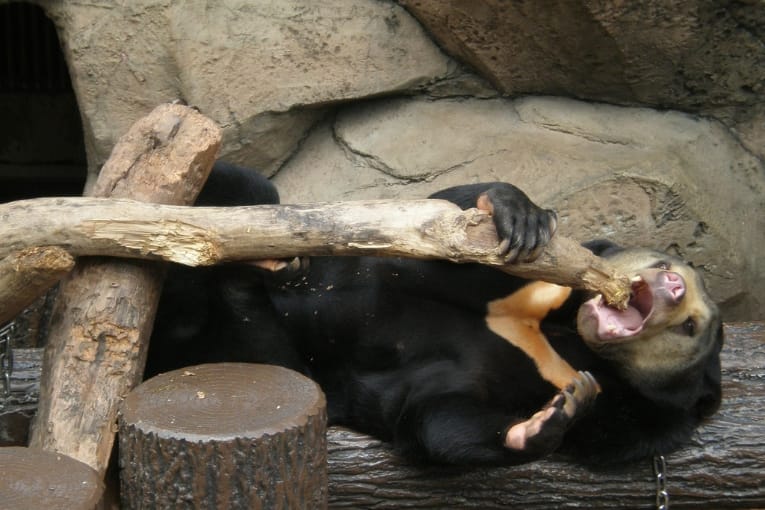
Photo Credit: Chester Siu / Wikipedia
Nestled in the heart of the city, the Fukuoka City Zoo and Botanical Garden offer a delightful escape into the world of flora and fauna. The zoo is home to a diverse array of animals from around the globe, while the botanical garden boasts a rich collection of plants and flowers. It’s an ideal destination for families and nature enthusiasts, providing educational and interactive experiences with the natural world.
- Trip Plan: Allocate half a day to fully enjoy both the zoo and botanical garden.
- Trip Budget: Around $6-8 USD for the combined zoo and garden entry.
- Best Time to Visit: Pleasant year-round; spring and autumn offer beautiful garden blooms.
- Best Things to Do: Observe a variety of animal species, explore the botanical garden, and participate in educational activities.
- Nearest Airports: Fukuoka Airport.
- Transports to Use: Subway to Sakurazaka or Minami-Koen Station, then walk.
- Near Tourist Attractions in Fukuoka: Ohori Park, Fukuoka Art Museum.
- Best Foods to Eat: Cafes and snack bars within the zoo and garden offer refreshments and meals.
- Best Places to Stay: Stay near Tenjin or Ohori Park for easy access.
- Travel Tips: Check the zoo’s schedule for feeding times and special events.
29. Hakata Traditional Craft and Design Museum
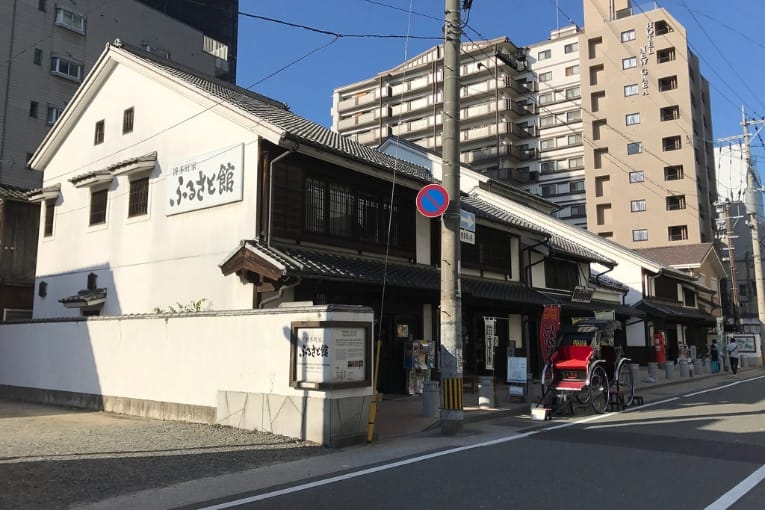
Photo Credit: そらみみ / Wikipedia
Located in the historic Hakata district, this museum celebrates the rich heritage of Hakata’s traditional crafts. It showcases a wide range of local craftsmanship, including Hakata-ori textiles, Hakata dolls, and other artisanal products. The museum not only displays these exquisite items but also offers hands-on workshops where visitors can try their hand at traditional craft-making. It’s a perfect place to appreciate the skill and artistry that define Fukuoka’s cultural legacy.
- Trip Plan: Spend about 1-2 hours exploring the museum and participating in workshops.
- Trip Budget: Free admission; fees for workshops and crafts.
- Best Time to Visit: Open year-round, workshops may vary by day.
- Best Things to Do: View the craft exhibits, participate in a workshop, and purchase unique souvenirs.
- Nearest Airports: Fukuoka Airport.
- Transports to Use: Short walk from Gion Subway Station.
- Near Tourist Attractions in Fukuoka: Kushida Shrine, Canal City Hakata.
- Best Foods to Eat: Sample local cuisine in the Hakata district.
- Best Places to Stay: Hotels in Hakata for cultural immersion.
- Travel Tips: Book workshops in advance and check for special exhibitions.
30. Genko Historical Museum

Photo Credit: Hot cake syrup / Wikipedia
The Genko Historical Museum, located near the Fukuoka Castle ruins, is dedicated to the Mongol invasions of Japan in the 13th century. The museum offers a comprehensive understanding of this significant historical event through artifacts, models, and interactive displays. It provides an insightful look into the samurai defense tactics and the impact of the invasions on Japanese history. The museum’s detailed exhibitions make it a must-visit for history enthusiasts.
- Trip Plan: Allocate about 1-2 hours for museum exploration.
- Trip Budget: Approximately $3-5 USD for admission.
- Best Time to Visit: Ideal for history buffs, open year-round.
- Best Things to Do: Learn about the Mongol invasions, view historical artifacts, and explore interactive exhibits.
- Nearest Airports: Fukuoka Airport.
- Transports to Use: Subway to Ohori Koen Station, then walk.
- Near Tourist Attractions in Fukuoka: Maizuru Park, Fukuoka Castle Ruins.
- Best Foods to Eat: Cafes and restaurants near Ohori Park offer a variety of options.
- Best Places to Stay: Stay near Ohori Park or in central Fukuoka.
- Travel Tips: Combine your visit with a walk through Maizuru Park and the castle ruins.
31. Korokan Historical Museum
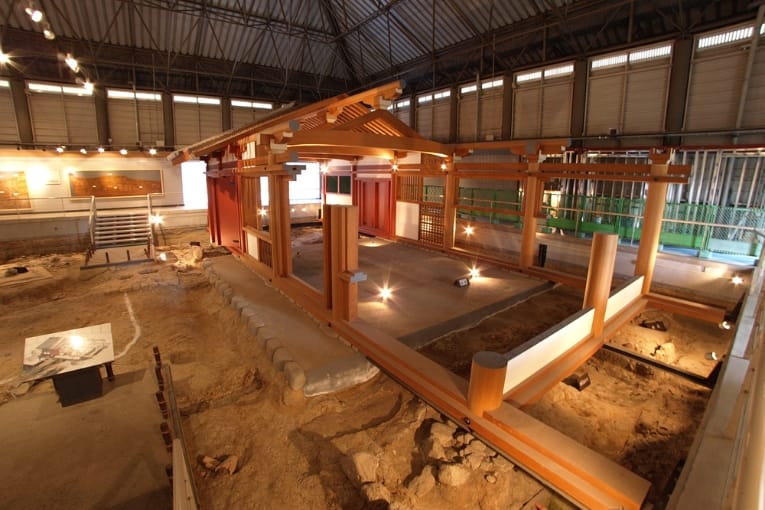
Photo Credit: ぱちょぴ / Wikipedia
The Korokan Historical Museum is an archaeological site and museum showcasing the ancient Korokan, a government guesthouse from the Heian period. The museum offers a fascinating glimpse into the historical interactions between Japan and its neighboring countries. Visitors can view the excavated remains of the Korokan, along with artifacts and exhibits that illustrate its historical significance as a center for diplomacy and trade.
- Trip Plan: Spend about 1-2 hours exploring the archaeological site and museum.
- Trip Budget: Free admission.
- Best Time to Visit: Open year-round, insightful for those interested in ancient history.
- Best Things to Do: Explore the archaeological remains, view historical exhibits, and learn about Heian-period diplomacy.
- Nearest Airports: Fukuoka Airport.
- Transports to Use: Subway to Ohorikoen Station, then a short walk.
- Near Tourist Attractions in Fukuoka: Ohori Park, Fukuoka Castle Ruins.
- Best Foods to Eat: Enjoy local and international cuisine in the nearby Tenjin area.
- Best Places to Stay: Choose accommodations in Tenjin or near Ohori Park for historical exploration.
- Travel Tips: Visit nearby historical sites for a comprehensive understanding of Fukuoka’s history.
32. Sumiyoshi Shrine
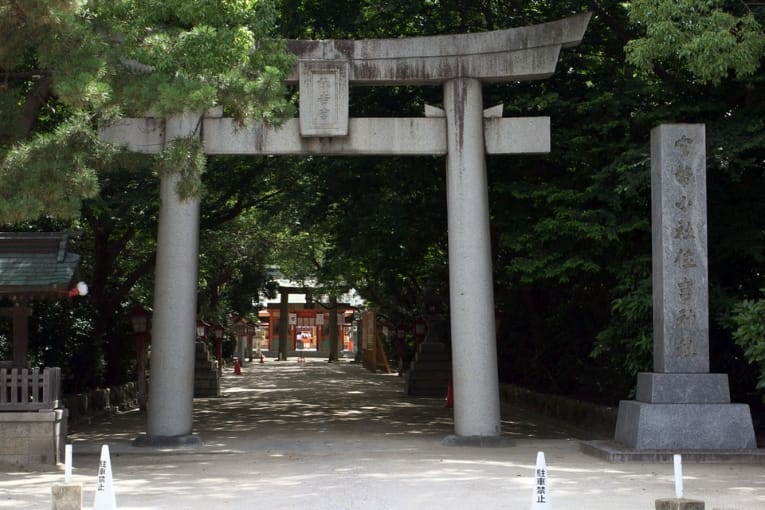
Photo Credit: Pontafon / Wikipedia
Sumiyoshi Shrine, one of Fukuoka’s oldest Shinto shrines, is known for its unique architectural style and serene atmosphere. Dedicated to the gods of sea and sailing, it’s a popular spot for fishermen and sailors seeking blessings. The shrine’s distinctive straight roof, rather than the curved style commonly seen in Japanese shrines, and its peaceful pond make it an aesthetically pleasing and tranquil destination.
- Trip Plan: Spend about 1 hour exploring the shrine and its surroundings.
- Trip Budget: Free admission.
- Best Time to Visit: Pleasant year-round, special ceremonies during New Year.
- Best Things to Do: Admire the shrine architecture, participate in rituals, and enjoy the serene setting.
- Nearest Airports: Fukuoka Airport.
- Transports to Use: Subway to Sumiyoshi Shrine Station, then walk.
- Near Tourist Attractions in Fukuoka: Explore the historic Hakata area.
- Best Foods to Eat: Sample local street food and traditional Japanese cuisine in the area.
- Best Places to Stay: Accommodations in central Fukuoka for easy city access.
- Travel Tips: Visit during traditional festivals for a unique cultural experience.
33. Level Five Stadium (Best Denki Stadium)
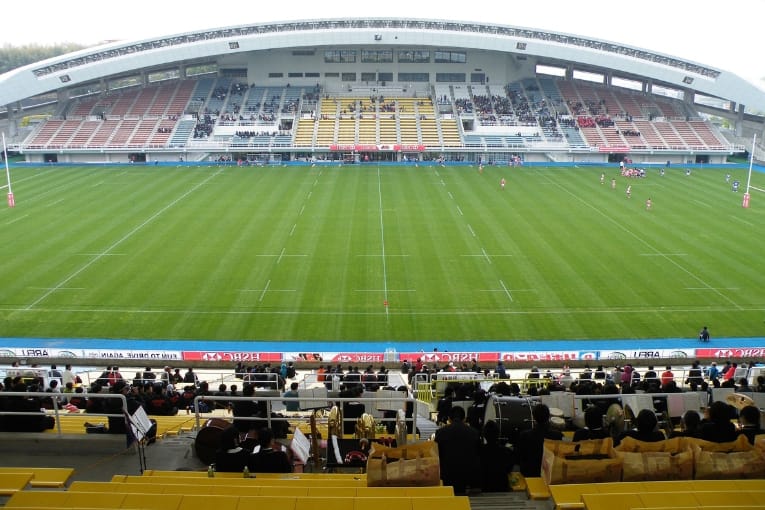
Photo Credit: Dɐ / Wikipedia
As the home stadium of the Avispa Fukuoka football club, Level Five Stadium is a hub of sports and entertainment in Fukuoka. The stadium hosts various sports events, including football matches and athletic competitions, offering an exciting atmosphere for sports enthusiasts. Its modern facilities and lively crowd make it an ideal place to experience the local sports culture and cheer on the home team.
- Trip Plan: Attend a match or event, typically lasting a few hours.
- Trip Budget: Ticket prices vary based on the event.
- Best Time to Visit: During football matches or sports events.
- Best Things to Do: Watch a live football match, and experience the local sports culture.
- Nearest Airports: Fukuoka Airport.
- Transports to Use: Subway to Hakozaki-Kyudaimae Station, then walk.
- Near Tourist Attractions in Fukuoka: Hakozaki Shrine, Kyushu University.
- Best Foods to Eat: Stadium snacks and nearby restaurants offer various options.
- Best Places to Stay: Hotels in central Fukuoka for access to various attractions.
- Travel Tips: Purchase tickets in advance for popular matches.
34. Fukuoka City Museum

Photo Credit: そらみみ / Wikipedia
The Fukuoka City Museum offers a comprehensive look into the history and culture of Fukuoka and the surrounding region. The museum’s exhibits range from ancient artifacts to displays about the city’s recent development. Highlights include the Gold Seal, a national treasure, and various interactive exhibits that make the museum appealing to visitors of all ages. It’s an educational and engaging destination for those interested in learning about Fukuoka’s rich heritage.
- Trip Plan: Allocate 2-3 hours for museum exploration.
- Trip Budget: Approximately $5 USD for admission.
- Best Time to Visit: Anytime, especially interesting during special exhibitions.
- Best Things to Do: Explore historical exhibits, view the Gold Seal, and participate in interactive displays.
- Nearest Airports: Fukuoka Airport.
- Transports to Use: Subway to Nishijin Station, then a short bus ride or walk.
- Near Tourist Attractions in Fukuoka: Fukuoka Tower, Momochi Seaside Park.
- Best Foods to Eat: Cafes and restaurants in the museum area offer various options.
- Best Places to Stay: Accommodations in Momochi or near Ohori Park.
- Travel Tips: Check for special exhibitions and cultural events.
35. Terumo Shrine
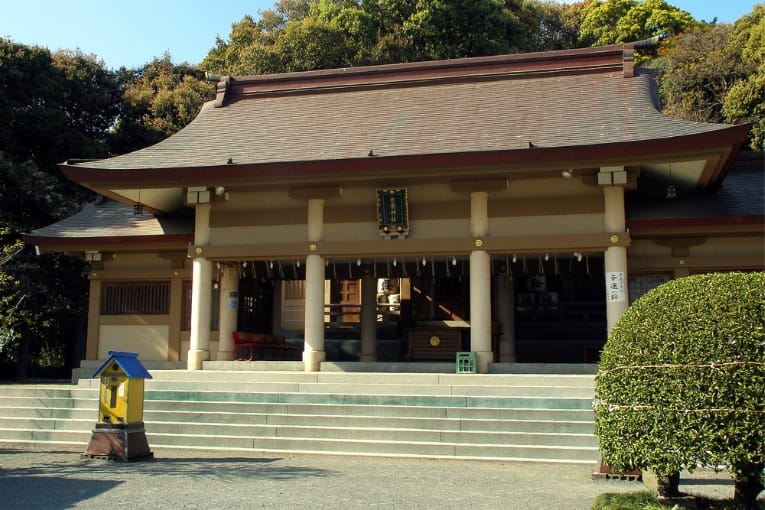
Photo Credit: ぱちょぴ / Wikipedia
Terumo Shrine, tucked away in a quiet neighborhood, is a small but historically significant Shinto shrine. Known for its peaceful atmosphere and traditional architecture, the shrine offers a glimpse into local religious practices and beliefs. It’s a place where visitors can experience the spiritual side of Japan, participate in Shinto rituals, and enjoy the serene environment. The shrine, with its lush surroundings and calming presence, provides a respite from the city’s hustle and bustle.
- Trip Plan: Spend about 30 minutes to an hour for a peaceful visit.
- Trip Budget: Free admission; offerings are welcome.
- Best Time to Visit: Ideal for a quiet, reflective experience, open year-round.
- Best Things to Do: Participate in Shinto rituals, admire the traditional architecture, and enjoy the tranquil setting.
- Nearest Airports: Fukuoka Airport.
- Transports to Use: Subway to nearby stations, followed by a short walk.
- Near Tourist Attractions in Fukuoka: Explore other local shrines and temples in the area.
- Best Foods to Eat: Try local snacks and traditional Japanese dishes in nearby eateries.
- Best Places to Stay: Hotels in central Fukuoka for easy exploration of the city.
- Travel Tips: Visit during local festivals for a unique cultural experience.
36. Komyozenji Temple
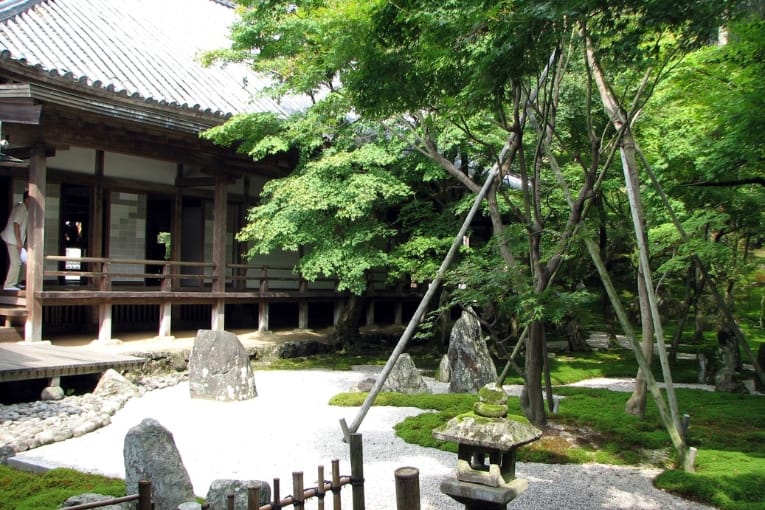
Photo Credit: Chris 73 / Wikipedia
Komyozenji Temple, a Zen Buddhist temple located in Dazaifu, is renowned for its stunning rock and moss gardens. The temple’s serene and beautifully landscaped gardens offer a tranquil setting for meditation and contemplation. The simplicity and elegance of the Zen gardens, along with the temple’s historical architecture, make it a spiritually uplifting and visually pleasing destination.
- Trip Plan: Spend about 1 hour exploring the temple and gardens.
- Trip Budget: Small admission fee for garden entry.
- Best Time to Visit: Pleasant in all seasons, with each offering a different garden experience.
- Best Things to Do: Meditate in the gardens, admire the temple architecture, and enjoy the peaceful atmosphere.
- Nearest Airports: Fukuoka Airport.
- Transports to Use: Train to Dazaifu Station, then a short walk.
- Near Tourist Attractions in Fukuoka: Dazaifu Tenmangu Shrine, Kyushu National Museum.
- Best Foods to Eat: Sample local sweets and tea in the Dazaifu area.
- Best Places to Stay: Stay in central Fukuoka or near Dazaifu for a cultural experience.
- Travel Tips: Visit early in the morning or on weekdays for a more serene experience.
37. Fukuoka Dam
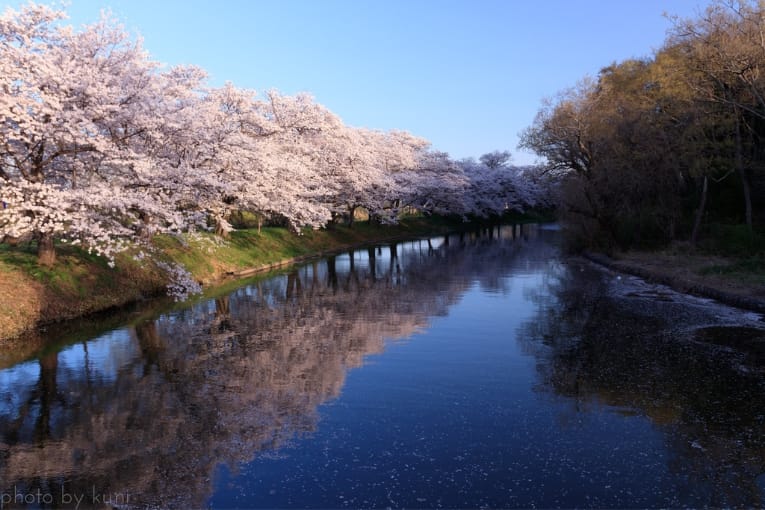
Photo Credit: t.kunikuni / Flickr
Fukuoka Dam, situated on the outskirts of the city, is not only a functional infrastructure but also a scenic spot offering picturesque views of the surrounding landscape. Visitors can enjoy leisurely walks along the dam, appreciate the engineering marvel, and relax in the nearby park areas. The dam area is particularly beautiful during cherry blossom season, making it a popular spot for picnics and outdoor activities.
- Trip Plan: Spend about 1-2 hours for a walk and relaxation.
- Trip Budget: Free admission.
- Best Time to Visit: Spring for cherry blossoms, enjoyable year-round.
- Best Things to Do: Walk along the dam, enjoy picnics in the park, and photograph the scenic views.
- Nearest Airports: Fukuoka Airport.
- Transports to Use: Bus or car from central Fukuoka.
- Near Tourist Attractions in Fukuoka: Explore the natural surroundings and nearby hiking trails.
- Best Foods to Eat: Pack a picnic or try local snacks from nearby vendors.
- Best Places to Stay: Stay in central Fukuoka or nearby areas for a mix of city and nature.
- Travel Tips: Visit during cherry blossom season for stunning floral views.
38. Fukuoka Prefectural Museum of Art
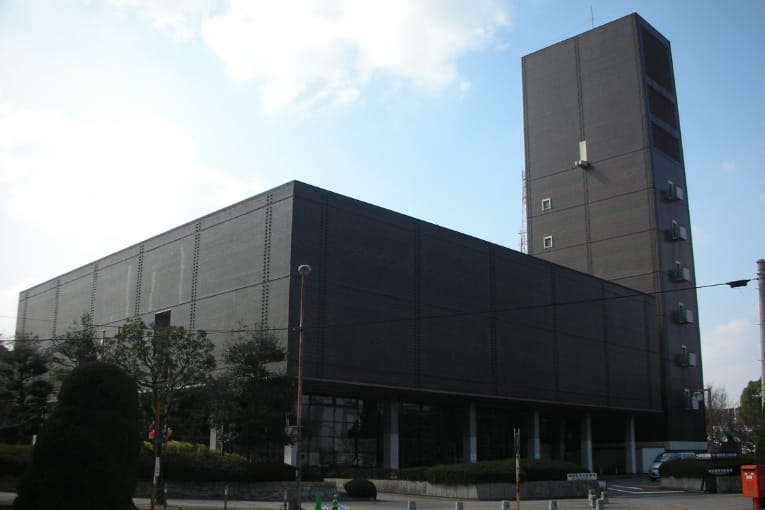
Photo Credit: おんさき / Wikipedia
The Fukuoka Prefectural Museum of Art is a cultural gem, showcasing a wide array of art ranging from traditional Japanese paintings to contemporary works. The museum’s collections provide a deep dive into the artistic heritage of the region and beyond. It regularly hosts special exhibitions, workshops, and cultural events, making it a dynamic venue for art enthusiasts and curious visitors alike.
- Trip Plan: Allocate 2-3 hours for exploring the exhibitions.
- Trip Budget: Around $5 USD for admission; special exhibitions may have additional fees.
- Best Time to Visit: Visit during special exhibitions for unique experiences.
- Best Things to Do: View the art collections, participate in art workshops, and explore temporary exhibitions.
- Nearest Airports: Fukuoka Airport.
- Transports to Use: Subway to Tenjin or Hakata Station, then a short bus ride.
- Near Tourist Attractions in Fukuoka: Ohori Park, Fukuoka Castle Ruins.
- Best Foods to Eat: Cafes and restaurants in the museum and nearby areas offer a variety of dining options.
- Best Places to Stay: Accommodations in Tenjin or near Ohori Park.
- Travel Tips: Check the museum’s schedule for current exhibitions and art events.
39. Sasaguri Kyudai Forest
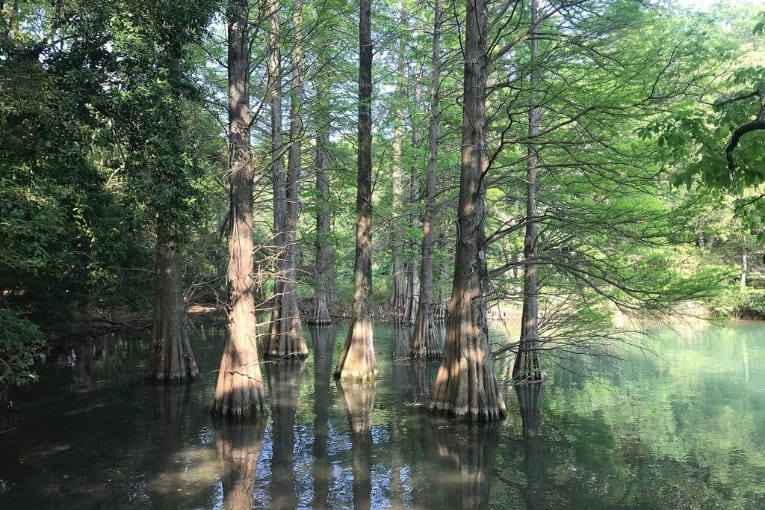
Photo Credit: Count_Zero / Flickr
Sasaguri Kyudai Forest is a vast green space near Kyushu University, offering a natural retreat with walking trails, picnic spots, and a variety of flora and fauna. It’s an ideal destination for nature lovers, hikers, and families looking for a peaceful day out. The forest provides an escape from the urban environment and a chance to reconnect with nature through its serene landscapes and tranquil atmosphere.
- Trip Plan: Spend a half-day hiking and exploring the forest.
- Trip Budget: Free admission.
- Best Time to Visit: Year-round, with each season offering its unique beauty.
- Best Things to Do: Hike the forest trails, enjoy a picnic, and observe local wildlife.
- Nearest Airports: Fukuoka Airport.
- Transports to Use: Train to Sasaguri Station, then a short bus ride or walk.
- Near Tourist Attractions in Fukuoka: Explore other natural areas around Kyushu University.
- Best Foods to Eat: Pack a picnic or try local snacks at nearby shops.
- Best Places to Stay: Stay in Fukuoka city or nearby Sasaguri for a rural experience.
- Travel Tips: Wear comfortable hiking shoes and bring water for your forest adventure.
40. Hakata Port Tower
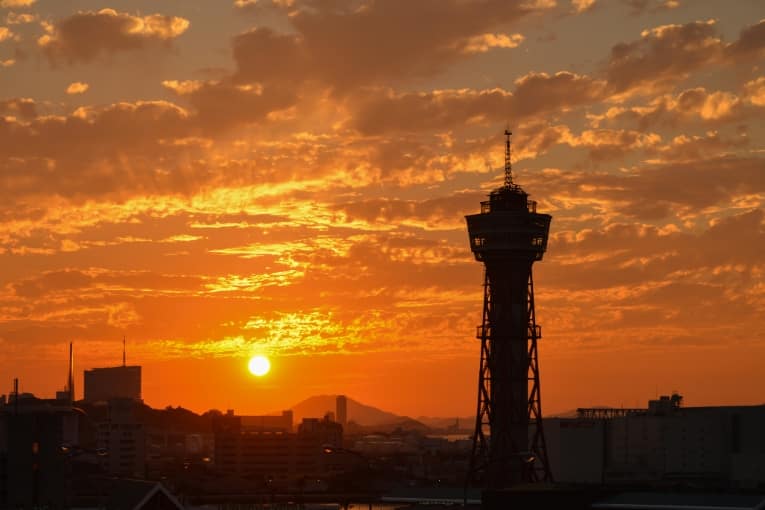
Hakata Port Tower is a prominent landmark in Fukuoka, offering stunning views of Hakata Bay and the city skyline. The tower’s observation deck is a popular spot for tourists and locals to enjoy the panoramic vistas, especially beautiful during sunset and evening hours. The tower also hosts exhibitions and events, adding to its appeal as a tourist destination.
- Trip Plan: Spend about an hour at the tower for the view and exhibitions.
- Trip Budget: Free admission to the observation deck.
- Best Time to Visit: Sunset for beautiful views, open year-round.
- Best Things to Do: Visit the observation deck, enjoy the panoramic views, and explore the tower’s exhibitions.
- Nearest Airports: Fukuoka Airport.
- Transports to Use: Bus or subway to Hakata Port.
- Near Tourist Attractions in Fukuoka: Explore the Hakata waterfront area.
- Best Foods to Eat: Dining options are available at Hakata Port and nearby areas.
- Best Places to Stay: Hotels in Hakata or Tenjin for easy access to city attractions.
- Travel Tips: Check for special events or exhibitions held at the tower.
41. Nishi Park
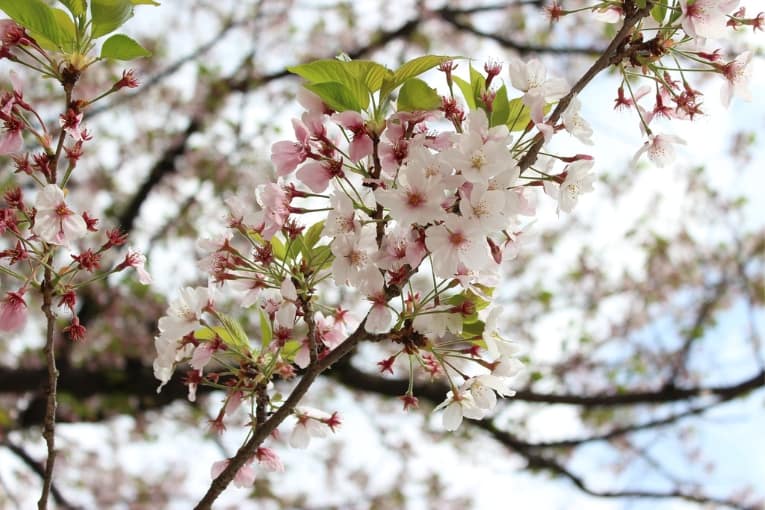
Photo Credit: zaimoku_woodpile / Flickr
Nishi Park is a scenic park located on a hill overlooking Hakata Bay, known for its spacious lawns, seasonal flowers, and cherry blossom trees. It’s a favorite spot for picnics, outdoor activities, and enjoying the changing seasons. The park also features historical monuments and provides a panoramic view of Fukuoka, making it a delightful destination for both relaxation and sightseeing.
- Trip Plan: Spend 1-2 hours for a picnic and leisurely walk.
- Trip Budget: Free admission.
- Best Time to Visit: Spring for cherry blossoms, pleasant year-round.
- Best Things to Do: Enjoy picnics, take leisurely walks, and photograph the city views.
- Nearest Airports: Fukuoka Airport.
- Transports to Use: Subway to Ohori Koen or Ropponmatsu Station, then a short bus ride or walk.
- Near Tourist Attractions in Fukuoka: Ohori Park, Fukuoka Castle Ruins.
- Best Foods to Eat: Bring a picnic or try snacks from nearby vendors.
- Best Places to Stay: Accommodations in Tenjin or near Ohori Park.
- Travel Tips: Visit during cherry blossom season for stunning views.
Conclusion: A Mosaic of Cultural and Natural Splendor
As we wrap up our journey through the “Top 41 Tourist Attractions in Fukuoka,” it’s evident that this vibrant city is a tapestry woven with diverse threads of history, culture, nature, and modernity. Fukuoka seamlessly blends its rich historical heritage, evident in the ancient shrines and temples, with the dynamic pulse of contemporary life seen in its bustling markets and lively entertainment districts. The city’s natural beauty, from the serene parks to the picturesque islands in Hakata Bay, complements its urban charm, offering tranquil escapes within reach.
Fukuoka’s culinary landscape, with its famed Hakata ramen and vibrant street food culture, is a gastronomic delight, reflecting a deep respect for tradition and a welcoming of global influences. The city’s art and science museums, showcasing both regional and international works, stand as testaments to its commitment to cultural enrichment and educational engagement.
In essence, Fukuoka is a city that invites exploration and rewards curiosity. It’s a place where every corner has a story, every street a new experience, and every visit an opportunity for discovery. Whether you’re seeking a glimpse into Japan’s past, a taste of its exquisite cuisine, or a touch of its natural beauty, Fukuoka offers a rich, multifaceted experience that leaves visitors enriched and longing for more.



